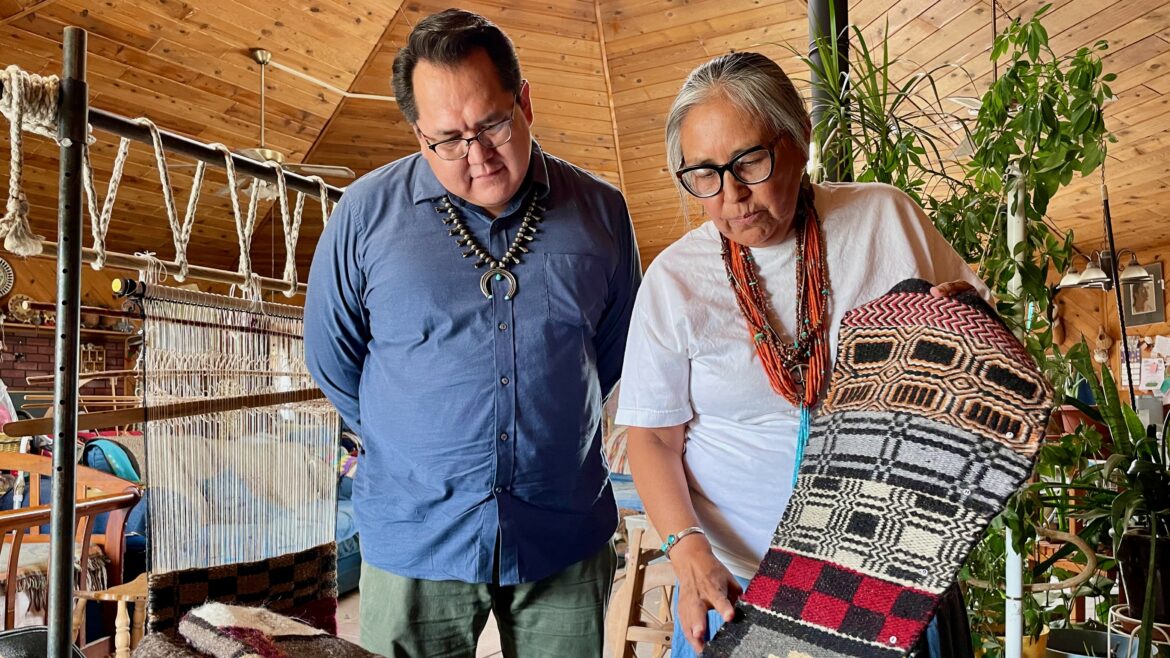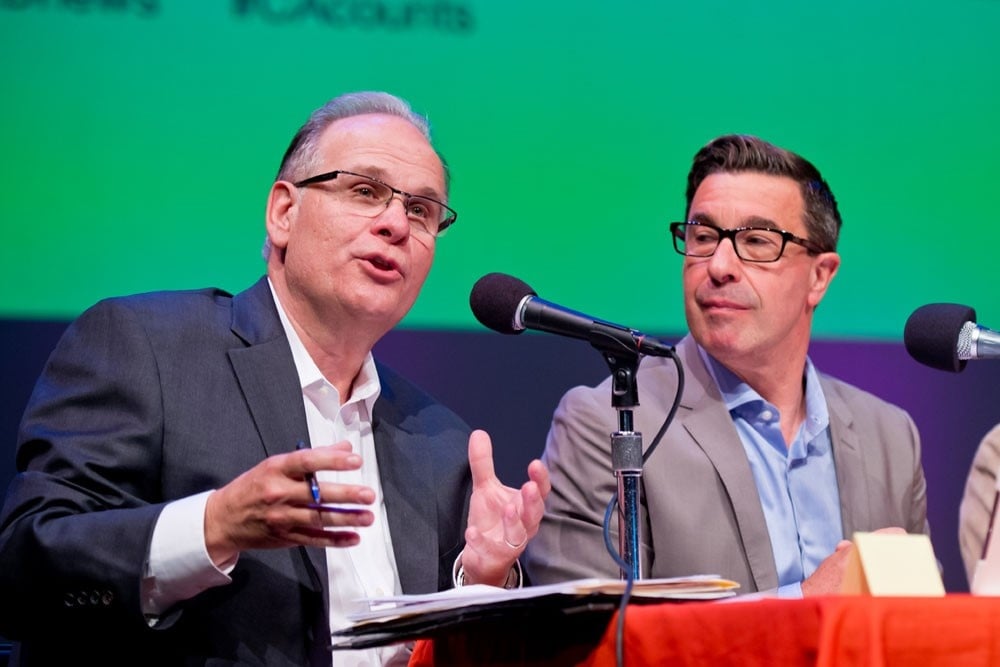Second season of ‘Native America’ celebrates contemporary Native communities

Providence Pictures
Navajo weaver TahNibaa Naataanii shows her woven designs to engineer Aaron Yazzie in the second season of "Native America."
PBS is deepening its efforts to tell authentic Indigenous stories with the second season of Native America, which focuses on and is made by contemporary Native Americans.
Produced by Providence Pictures, the season premieres Oct. 24 and airs through November, which is Native American Heritage Month. Each of its four hourlong episodes will explore an aspect of contemporary Native heritage: design, language, the warrior spirit, and Native women as leaders. The production was funded by CPB and a grant from the Anne Ray Foundation.
For Providence Pictures EP Gary Glassman, a second season offered a way to revisit the Native values and knowledge introduced in the first season, which focused on ancient Native civilizations across the Americas and aired in fall 2018. Orienting the new season around modern Native communities will give Native people a platform to explain how their history and traditions endure, Glassman said.
“The jumping-off point for us from season one to season two was in how we went about telling the story,” he said. “Instead of just going to archeological sites and talking to scholars, we foreground the owners of that amazing legacy, contemporary Native people.”
Unmediated storytelling
Bill Gardner, PBS’s VP of multiplatform programming and head of development, said the network wanted to continue the series after receiving “overwhelmingly positive” feedback from both stations and tribal partners on how season one allowed Native people to tell their own stories.

Gardner said he sought authenticity with the second season. PBS aimed to be “as unmediated as possible” when telling the stories of the communities the show aims to uplift, he said, “so people are just speaking their truth and they say what they want to say, and they’re not trying to set a narrative.”
Because of this, Gardner said, producers of the series provided little in the way of narrative direction. The team collectively developed themes for the episodes and sought out stories that would highlight those themes. Then, Gardner said, they “let the story be the story.”
Gardner said the team adapted the production to allow for more time to build trust and partnerships with the Native communities featured. For the second season, Gardner said, he and Glassman also sought out Native filmmakers to produce and direct as a way to enable Natives to tell their own stories.
“I’m not of the opinion that, you know, only one particular type of person can tell one particular type of story, but you have to be authentic as possible,” Gardner said. “And the best route to do that is to be transparent and to incorporate the contributions and the opinions and the feelings [of] the people who we are telling the story about.”
Shared experience
Gardner said that working with Native filmmakers made interviewees feel comfortable enough to speak in depth about their knowledge and experience.
“You really saw that you could get very, very deep,” he said. “And people who were being interviewed felt able to let their guard down and say what they really felt at times.”
Dan Golding, a producer/director and an enrolled member of the Quechan Indian Nation, said that people featured in the season felt more comfortable telling stories to other Natives because they knew they wouldn’t have to explain themselves.

“I think we have a kind of shared experience between us as Native people, a sort of unspoken kind of trust and understanding,” Golding said.
Golding directed “Language is Life” and “Warrior Spirit,” the second and fourth episodes of the season. “Language is Life” follows Dwayne Tomah, a “Language Keeper” who works to preserve and teach the Passamaquoddy language and culture, as he seeks out 130-year-old wax cylinder recordings of spoken Passamaquoddy. Tomah discovers the recordings in the Library of Congress’ National Audio-Visual Conservation Center.
“What I’m going to do now is to continue to carry the voice of my ancestors,” Tomah says in the episode. “… Their voices will not be on a shelf.”
It was a moment Golding said he could understand, as recordings of his own great-grandfather are in the Smithsonian.
“I understand where [participants are] coming from,” Golding told Current. “… We’re not just in there to extract information, but we’re there to build relationships with these communities for the better.”
The understanding and trust between the Native people in front of and behind the camera give the season a “visceral authenticity” different from anything else on television, Glassman said.
“These are real stories told by the people who know the stories best,” Glassman said. “And I think authenticity actually comes right through the screen, and it’s what makes for good TV.”






